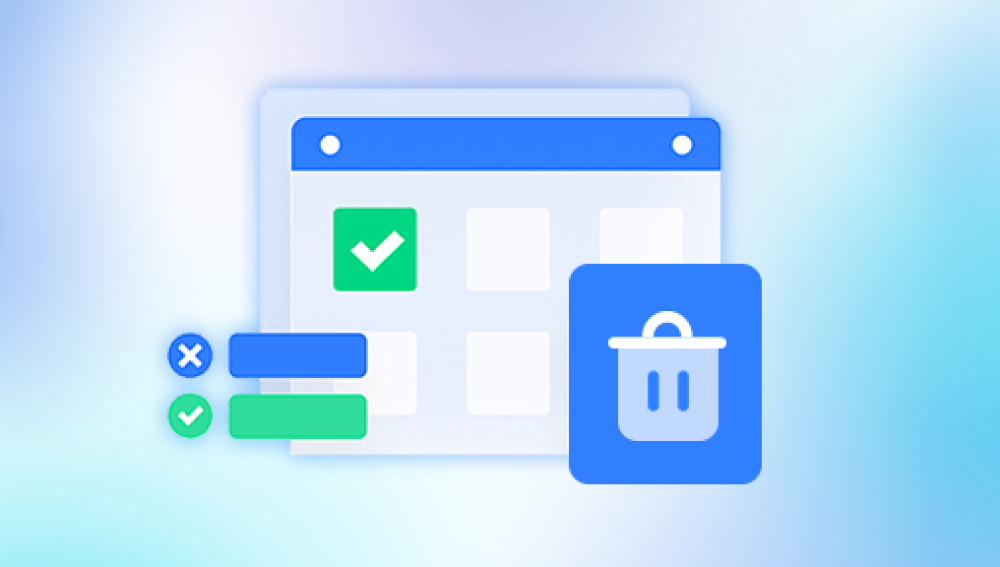OneNote is a powerful digital note-taking application developed by Microsoft, enabling users to capture and organize information in a flexible, cloud-based format. From students using it for class notes to professionals tracking meeting details, OneNote has become an essential tool in both personal and professional settings. However, like all digital platforms, mistakes can happen such as accidentally deleting important pages, sections, or entire notebooks.
Chapter 1: OneNote’s Structure and Storage
1.1 Pages, Sections, and Notebooks
To recover deleted content effectively, you first need to understand how OneNote organizes data:
Notebook: The top-level container.
Section: Dividers within a notebook.
Page: The core content area where notes are written.
A deleted page might still exist if the section or notebook it belonged to wasn't deleted, making recovery easier.

1.2 Where Does OneNote Store Data?
Depending on the version of OneNote you're using, your data may be stored locally or in the cloud:
OneNote for Windows 10 or OneNote App (OneNote 2021): Typically stores notebooks in OneDrive.
OneNote 2016: Allows local file storage as well as OneDrive syncing.
OneNote Online: Syncs with OneDrive only.
Mobile Versions: Use cloud sync (OneDrive).
Understanding where your data is stored is critical because it determines what recovery options are available to you.
Chapter 2: Check the Notebook’s Recycle Bin
OneNote includes a built-in Notebook Recycle Bin, which temporarily holds deleted pages and sections.
2.1 How to Access the Recycle Bin (Windows/Desktop)
Open OneNote (2016 or OneNote App).
Go to the Notebook where the page was deleted.
Click on the History tab in the top menu.
Select Notebook Recycle Bin.
Look for your deleted page.
Right-click on the page and select Move or Copy to restore it to the original section.
2.2 How to Access the Recycle Bin (OneNote Online)
Visit OneNote Online.
Open the appropriate notebook.
Click View > Deleted Notes.
Select the page you want to restore.
Click Restore or copy the contents to a new page.
2.3 Time Limits for Deleted Pages
Deleted content in the Recycle Bin is stored for 60 days.
After this period, the pages are permanently deleted and not recoverable from the bin.
Chapter 3: Recover from OneDrive Version History
If your OneNote notebook is stored in OneDrive, you can use OneDrive’s Version History feature to restore a previous version of a page or entire notebook.
3.1 Steps to Use OneDrive Version History
Go to OneDrive.
Navigate to the folder where your OneNote notebook is saved.
Right-click on the notebook file (.one or .onetoc2).
Select Version history.
Browse through available versions and click Restore to recover an earlier copy that contains the deleted page.
This method is useful if the page was edited or deleted recently and you need to revert the notebook to a specific time.
Chapter 4: Restore from Backups (OneNote 2016/Windows Desktop)
OneNote 2016 offers a backup feature that automatically saves copies of your notebooks.
4.1 Locate OneNote Backups
Open OneNote 2016.
Go to File > Options > Save & Backup.
Note the path listed under Backup Folder.
Open this folder using File Explorer.
4.2 Restore from Backup
In the backup folder, open the notebook or section file you want to restore.
Right-click the file and select Open with OneNote.
Copy the deleted page and paste it into your active notebook.
4.3 Configure Backup Settings
To increase backup frequency:
Go to File > Options > Save & Backup.
Under Backup, set how often OneNote creates backups and how long to keep them.
Chapter 5: Use Cloud Recovery for OneNote Online Users
If you're using OneNote Online, there's no local storage or manual backup, but you can still recover deleted pages with OneDrive.
5.1 Check OneDrive Recycle Bin
Go to OneDrive.
Click the Recycle bin in the left menu.
Find the deleted OneNote notebook or section.
Select and click Restore.
If the entire notebook was deleted, restoring it from the OneDrive Recycle Bin will recover all its pages.
Chapter 6: Recover Pages on Mobile Devices
6.1 iOS and Android Devices
OneNote on mobile devices does not have a built-in Recycle Bin, but pages synced to OneDrive are still recoverable via desktop or web.
If a page was accidentally deleted:
Open OneNote on desktop or web.
Follow the Recycle Bin or Version History steps.
For best results, always ensure that sync is enabled, so changes and deletions are tracked and reversible via the cloud.
Chapter 7: Recovery Using Third-Party Tools
If all else fails, you can consider third-party data recovery tools—particularly if your notebook was stored locally and the files were deleted or corrupted.
7.1 Common Recovery Tools
Drecov Data Recovery
Drecov Data Recovery is a user-friendly and reliable software designed to help individuals and businesses retrieve lost, deleted, or corrupted files from a wide range of storage devices. Whether you’ve accidentally deleted important documents, lost photos from an SD card, or experienced a system crash that wiped your hard drive, Drecov Data Recovery offers a straightforward solution to get your data back.
One of its most valuable features is its ability to recover data from hard drives, USB flash drives, memory cards, external drives, and even formatted or damaged partitions. The software supports a wide variety of file types, including documents, videos, images, audio files, and archives. Its intuitive interface allows users to quickly scan their devices, preview recoverable files, and selectively restore the data they need all without requiring technical expertise.
7.2 How to Use a Recovery Tool
Install the recovery software.
Scan the drive where OneNote data was stored.
Locate deleted .one or .onepkg files.
Recover and open them in OneNote.
Extract the pages you need and re-integrate them into your active notebooks.
Be cautious when using third-party tools only use well-reviewed software from reputable vendors.
Chapter 8: Troubleshooting Common Recovery Issues
8.1 Can’t Find Deleted Page in Recycle Bin
Try expanding the bin to include all deleted sections.
Double-check if the page was moved instead of deleted.
Search your notebook with keywords from the missing page.
8.2 Notebook Not Syncing Properly
Go to File > Info > View Sync Status (Windows).
Click Sync All.
If errors persist, check your internet connection or storage quota.
8.3 Accidentally Overwritten a Page
Use the Page Version History:
Right-click on the page.
Select Page Versions.
Browse and restore the desired version.
Chapter 9: Prevent Future Data Loss
9.1 Best Practices
Regularly backup your notebooks.
Use cloud sync via OneDrive.
Avoid frequent deletions without reviewing content.
Always check the Recycle Bin before emptying.
9.2 Enable and Customize Backups
In OneNote 2016:
Set backup frequency to every day.
Keep backups for at least 30 days.
Store backups on an external drive or secure cloud folder.
9.3 Educate Team Members (for Business Users)
If you manage a shared notebook among team members:
Train users on recovery procedures.
Restrict delete permissions if possible.
Use audit logs or versioning where available.
Losing a OneNote page can feel frustrating especially when it contains important meeting notes, research, or personal reflections. Fortunately, Microsoft provides multiple layers of protection and recovery options that can help restore deleted content. From using the built-in Recycle Bin and OneDrive version history to restoring from backups or leveraging third-party recovery tools, your notes are rarely gone for good.




